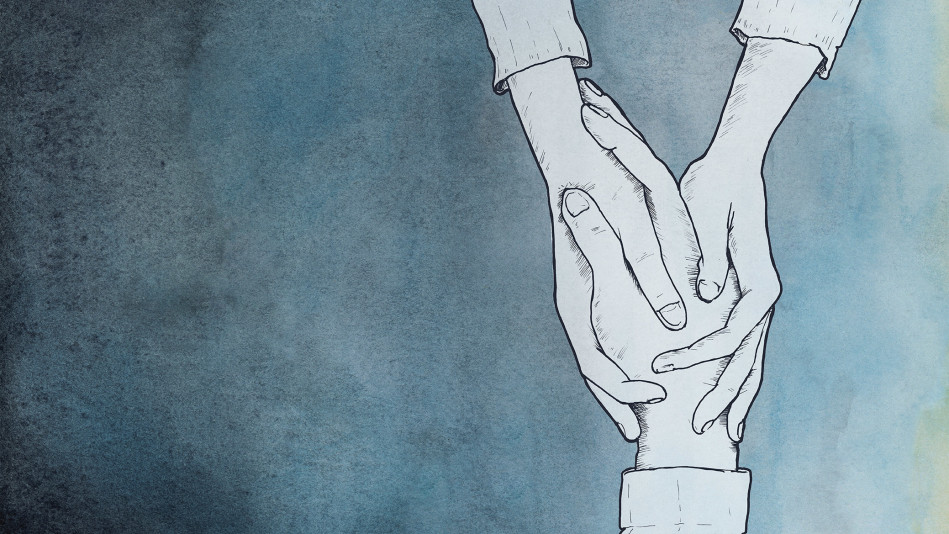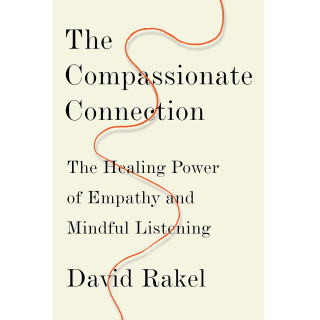5 Things You Should Never Say to Someone Who Is Hurting
The author of The Compassionate Connection explains how to genuinely support those who need us most.

Photo: alicemoi/Getty Images
People have the urge to be "fixers" instead of healers. When a child comes home crying after having had a fight with another little boy, his parents might be quick to offer a tender cuddle. But they also feel the impulse to make the situation better. Before they even realize it, they're suggesting how the interaction at school went awry ("Did you say you were sorry?"). They might offer ideas about how to think about the situation ("Don't take it too hard. Kyle is just teasing you because he's jealous!"). They might provide advice about how to behave differently the next time ("Just learn to laugh it off"). Or they may want to punch the other kid in the nose! But even the wisest, tried-and-true suggestions can create distance between caregivers and the person who's hurting. The words they use, their tone of voice, the mere suggestion that a problem is small and manageable can reveal the ways in which helpers are not hearing and understanding what's going on.
People do their most egregious "fixing" when they're advising others about their health. Everyone has a helpful answer. If a parent has high blood pressure, they suggest low-sodium foods. When a colleague groans about the aches of arthritis, they say, "Have you tried an anti-inflammatory like ibuprofen?" Recently, when one friend complained she had gained too much weight during pregnancy and that she was really worried about the way her body had changed, another quickly came to the rescue with the suggestion: "Can't you just walk a little bit every day?" No matter how good the intentions of the helper, the person who's hurting is seldom better off with these kinds of solutions.
Most importantly, the fix-it type of support offers only short-term solutions. The deeper, and sometimes long-standing, issue of what hurts still goes unaddressed. Instead of facilitating health, this kind of "help" actually prolongs pain and hinders recovery. When caregivers fail to acknowledge the big picture of another person's suffering, they fall short as friends, and they fail as supporters and helpers. Everyone wants to distract from anguish, but the real healing happens when caregivers help patients turn toward it and be with it.
Turning toward suffering doesn't sound like much fun. Who wants to do that? If I give a patient the option of getting a massage for the pain in his neck versus talking about the situation in his life that's giving him a pain in the neck, most likely he will choose the former. But the pain won't resolve until we turn toward the authentic cause. Both my patient and I need to give it our attention. This is the active process of facing what's really going on as compared to passively treating the problem with a drug or a massage. With an active process, the patient gets what he needs most...another's true presence. With that kind of attunement, life hurts less.
Over the years, I have found that people make many unhelpful statements that may rupture a connection, even though they believe they're doing their best to be present with someone who is hurting. In fact, most often, these comments and questions function as distancing devices. Here are a few familiar ones:
"I know what you're going through. When I broke my leg..."
This is a form of narcissism. People turn the conversation back on themselves and their own problems as a way of "relating" to the other and "just trying to be helpful." How about: "When I had back pain, I read this book/did yoga/saw a chiropractor/had physical therapy/took narcotics/tried acupuncture, or you-name-it, and I avoided surgery." This implies that what worked for one person should work for another. Maybe, but maybe not. A patient's condition might be completely different, and others' well-meaning but misguided advice could actually worsen the problem. When people are busy talking about their own lives, they're not listening deeply to the other's pain so they're not really making a connection.
"You think that's bad?"
This is the approach of instantly telling the person about someone else whose problems were worse as a way of diminishing what the injured party is suffering. As a good friend explained to me, "I can't tell you how many horror stories I heard about bicycling accidents after my husband took a serious spill that landed him in the hospital for a few days with six broken ribs, a bruised lung, and a face that looked like raw steak." Does anyone really want to add to the burden of the injured person and his or her family by sharing these one-upmanship tales? Whom do they really serve? How are these stories helpful? And how do they reinforce the connection?
"Why are you telling me this? Can't you see how upset I am?"
During a crisis or medical setback, family caregivers can become anxious and need to be taken care of themselves, diverting precious energy. This attitude also can cause the person they want to serve to conceal the seriousness of the problem or prevent him or her from reaching out for help when it's most needed—as a way of protecting family members from becoming too distraught.
"Snap out of it..." "Pull yourself together..." "It can't be that bad..."
With this attitude, people communicate that they don't recognize the other's suffering or hardship. This heightens an individual's sense of aloneness just at the moment when support and connectedness are most needed.
"I'm so worried about you. I'm afraid you'll never get better."
This may be the most destructive communication of all. If we convey confidence and positive emotions through our mirror neurons, which in turn can create a healing epigenetic environment and a reordering of brain cells, we can do just the opposite when we express doubt, fear, and despair.
What Helps
In The Healer's Art, an elective class offered to first- and second-year medical students at the University of Wisconsin School of Medicine and Public Health, we ask our students to identify which statements or behaviors had been unhelpful when they were suffering a significant loss. Here's what didn't work during a time of suffering:
- The person tried to explain it.
- The person told me, "Everything will all be okay."
- The person avoided me or changed the subject.
- The person tried to fix it.
- The person talked about her own experience.
- The person belittled my feelings.
- The person didn't allow me to cry or be sad.
- The person analyzed the situation.
- The person pushed his own spiritual beliefs.
Those words and actions ended up in the "did not help" column because people are often too quick to project their beliefs onto others without taking the time to listen and just be with them.
But we also inquire: "What did someone say or do that helped you get through your challenging situation?" Consistently, others' simple caring presence and actions comforted them more than any advice did. Here are the most common on our list.
What helped? The other person:
- Just listened
- Cooked me some food
- Shared in and accepted my emotions
- Sat with me
- Gave me a hug
- Recognized my needs and didn't ignore or avoid me
- Was patient with me
- Was just there for me
People who are hurting need to be held and cared for. It is not knowledge, but rather presence and connection that count. They need to know that they're not alone in their predicament. "We'll get through this together," is a positive statement that conveys compassionate support and a willingness to be fully available. Perhaps this is why cancer support groups are so effective.
In the final analysis, I think it is important that caregivers do their best, but they will burn out if they believe they can change or fix people. It is more fun to be a friend and encourage through a caring connection. At least with this attitude, we will do no harm.
 Excerpted from The Compassionate Connection: The Healing Power of Empathy and Mindful Listening, by David Rakel. Copyright © 2018 by David Rakel, MD. With permission of the publisher, W.W. Norton & Company, Inc. All rights reserved.
Excerpted from The Compassionate Connection: The Healing Power of Empathy and Mindful Listening, by David Rakel. Copyright © 2018 by David Rakel, MD. With permission of the publisher, W.W. Norton & Company, Inc. All rights reserved.



